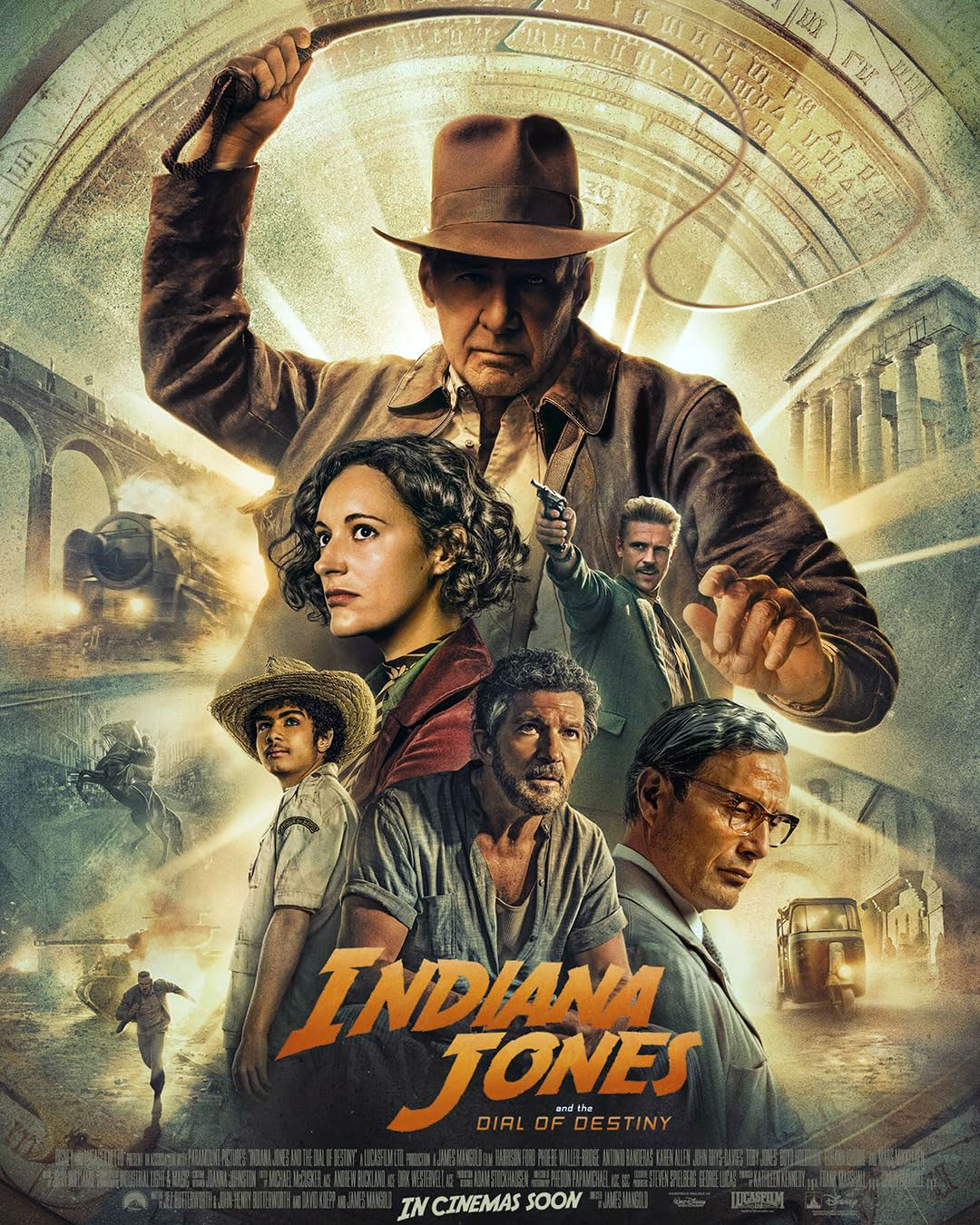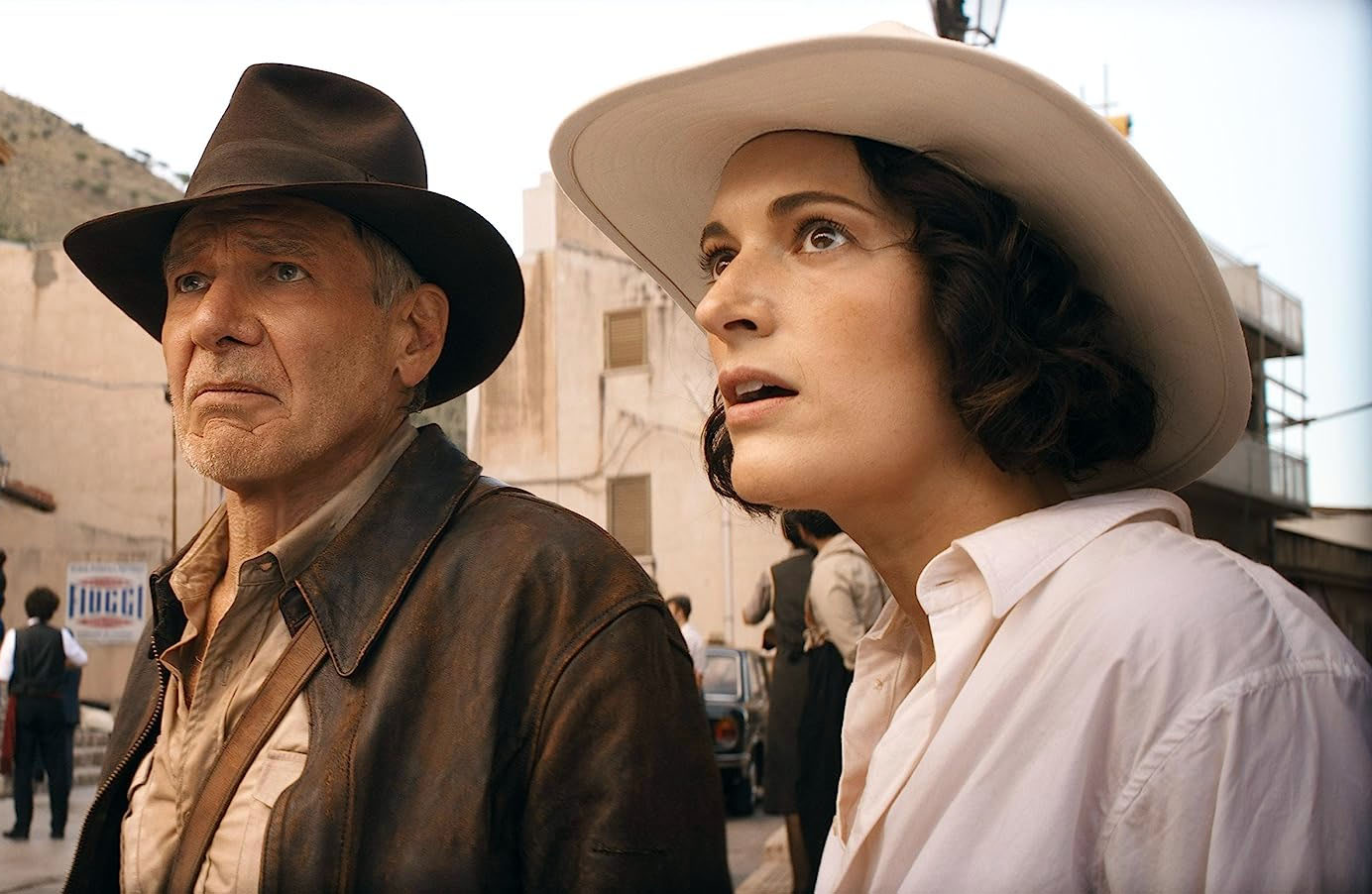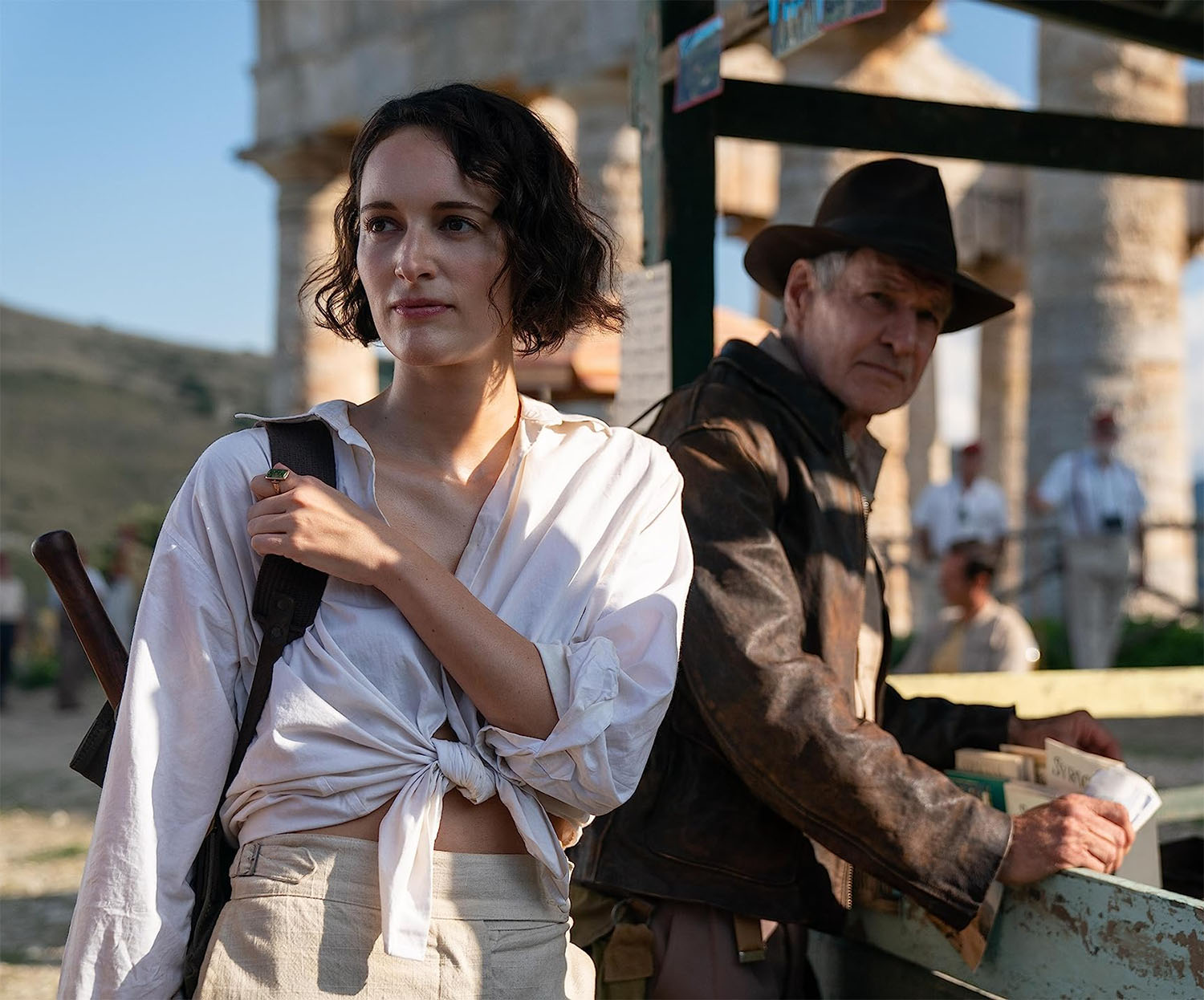The fifth and final installment of the beloved Indiana Jones franchise, “Indiana Jones and the Dial of Destiny”, heralds the end of an era. This movie, however, is a disappointing send-off for the intrepid professor, offering a contrived plot and underwhelming action sequences.
The story commences with an extended prologue set near the end of World War II. The use of the de-aging technique on Harrison Ford is impressive, possibly one of the movie’s highlights. Accompanied by his geeky pal Basil Shaw, Indy sets out to find the Lance of Longinus, only to switch his pursuit to the Archimedes Dial, an artifact believed to manipulate time fissures.
A thrilling encounter with Third Reich treasure-seekers and a deadly battle atop a train against Jürgen Voller, a mad Nazi scientist played by Mads Mikkelsen, ensues. Despite the excitement, the casting choice for Mikkelsen feels a bit uninspired, considering his past villainous roles. This sequence concludes with Indy gaining possession of the Archimedes Dial, marking another successful adventure.
The narrative then jumps to 1969, a dozen years after “Crystal Skull”. We find Indy living a far less glamorous life as a cranky old man, teaching at Hunter College. He seems a mere shadow of his former self, barely engaging with his students or regaling them with his past adventures.

The plot takes a twist with the introduction of Helena Shaw, the daughter of Indy’s old friend Basil. While she initially claims to be writing her doctoral thesis on the Dial of Destiny, her true intentions soon surface. She intends to steal Indy’s half of the artifact and auction it to the highest bidder.
Further complications arise with the return of Jürgen Voller, now a scientist for NASA, who will stop at nothing to acquire both halves of the Dial. His goal? To travel back in time and alter the course of World War II.
Character Portrayal and Performances
Harrison Ford
In “Indiana Jones and the Dial of Destiny”, Harrison Ford reprises his iconic role for the final time, bringing his own brand of charm and grit to the beloved character. Despite the movie’s shortcomings, Ford’s performance stands as a testament to his enduring commitment to the character of Indiana Jones.

In the film’s prologue, set near the end of World War II, the use of de-aging technology on Ford is a standout, allowing him to portray a younger Indiana Jones convincingly. This visual transformation enhances his performance, taking audiences back to the character’s heyday and adding a touch of nostalgia.
The narrative then transitions to 1969, depicting Indy as a “broken, crusty, surly old-timer”. Ford embraces this characterization, delivering a performance that, while starkly different from the spirited adventurer of previous films, showcases a nuanced portrayal of an older, world-weary Indy. He effectively conveys the character’s disillusionment and longing, lending a sense of authenticity to his scenes and keeping audiences invested in his journey.
While the plot may falter at times, Ford‘s performance does not. His return to the role adds a layer of familiarity and comfort to the final installment of the franchise, reminding fans why they fell in love with the character in the first place. Despite the movie’s flaws, Ford’s portrayal of Indiana Jones remains a bright spot, underlining his significant contribution to the enduring appeal of this iconic franchise.
Phoebe Waller-Bridge
Phoebe Waller-Bridge, best known for her work on “Fleabag” and “Killing Eve,” takes on a significant role in “Indiana Jones and the Dial of Destiny” as Helena Shaw.

Helena is the daughter of Indy’s old friend, Basil Shaw, and initially enters the narrative under the pretense of writing her doctoral thesis on the Dial of Destiny. However, her true intentions soon come to light: she’s a fortune-hunter planning to steal Indy’s piece of the Dial and auction it off to the highest bidder.
This twist in her character adds an element of intrigue and tension to the film, as Indiana Jones must navigate this betrayal from someone he believed to be a friend’s daughter.
Waller-Bridge’s portrayal of Helena is a standout performance in the film. Her character is not merely a sidekick, but a complex individual with her own motivations and aspirations.
Described as “cheeky” and “manipulative,” Helena Shaw is a departure from the typical damsel in distress or simple love interest that often accompanies the Indiana Jones character in his adventures.
Waller-Bridge infuses Helena with a palpable sense of charm and cunning, making her a compelling figure who can stand toe-to-toe with the iconic archaeologist.
Toby Jones
Toby Jones, playing the role of Basil Shaw, the geeky pal of Indiana Jones, brings a commendable performance to the table. His character, although not as prominently featured as Ford’s, adds a layer of intrigue to the narrative.
Known for his exceptional ability to disappear into the roles he plays, Jones continues this tradition with his portrayal of Basil Shaw. The character, caught in the whirlwind of Indiana Jones’ adventures, provides both a counterpoint to Jones’ ruggedness and an essential component of the unfolding plot.
Jones delivers the character with an ease that draws attention, further enriching the dynamics of the narrative. His performance brings a much-needed lightness to the otherwise intense atmosphere of the plot, effectively stealing every scene he’s in.
Conclusion
Unfortunately, the overall plot feels overly contrived and clichéd, with a disappointing final action twist. Despite a few clever ideas and some well-crafted action sequences, the film falls short of the high bar set by its predecessors. Not even the presence of Harrison Ford as Indiana Jones can rescue it from collapsing into mediocrity. While the film pays homage to Indy’s journey, it ultimately feels like a dusty heap of the franchise’s former glory.
In conclusion, “Indiana Jones and the Dial of Destiny” is a disappointing end to an iconic franchise. It has its moments and is worth a watch for die-hard fans, but it fails to deliver the level of adventure and excitement synonymous with the Indiana Jones series?. I would give it a rating of 2.5 out of 5.
Reasons for 2.5 Rating for Indiana Jones and the Dial of Destiny
- Plot: The main plot line of “Indiana Jones and the Dial of Destiny” is described as “creaky, corny and contrived”. The critic notes that the story does not hold up well and eventually lands in “B-movie territory” due to a disappointing final action twist.
- Visual Effects: While the de-aging technique used on Harrison Ford is highly praised, the review mentions “some pretty terrible CGI” in a major action sequence, which detracts from the overall cinematic experience.
- Characters and Performances: While the review does not explicitly critique the performances, it does mention some uninspired casting choices, such as Mads Mikkelsen as the villain, given his history of similar roles. It also describes Indiana Jones’ character in this film as a “broken, crusty, surly old-timer”, which might disappoint fans expecting to see more of the hero they know and love.
- Pacing: With a “bloated” runtime of over two hours, the film may not sustain audience engagement throughout, especially with a plot that the critic describes as less than compelling.
- Originality: The film’s plot device of time travel to alter historical events is described as something audiences have seen many times before, which could lead to predictability and lack of suspense.
Despite these criticisms, the film does have a few redeeming qualities. The de-aging technology used on Ford is praised, and the film includes some “well-crafted action sequences”. Furthermore, the movie represents a final chapter for a beloved character and franchise, which might hold some sentimental value for long-time fans.

